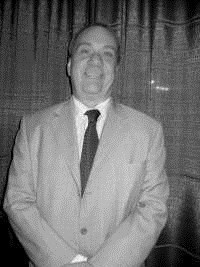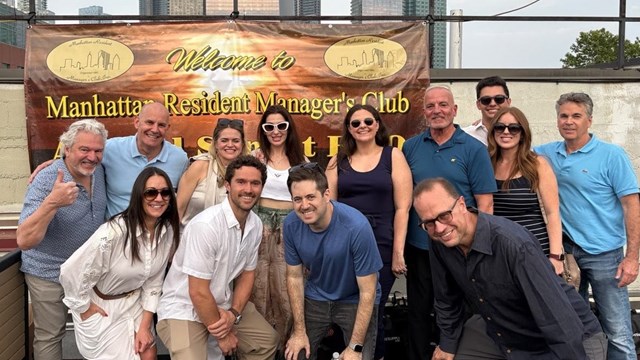
It's not exactly the United Federation of Planets of Star Trek lore, but The Federation of New York Housing Cooperatives and Condominiums (FNYHC) is an invaluable resource for members of the global housing cooperative and condominium community based in the New York City area.
A tax exempt, non-profit membership organization of housing cooperatives and condominiums, most of them in New York City, the organization's primary purpose is to educate board members of cooperatives and condominiums so that they can effectively manage the affairs of their buildings. In addition, the Federation monitors court decisions and local, state and federal legislation affecting housing co-ops and condos, providing guidance for resident board members involved in establishing majority control of their board or in the conversion of their buildings from rental to cooperative or condominium status.
A Little Bit of History
The year is 1953. Eisenhower is sworn into office, Jonas Salk introduces the polio vaccine, Watson and Crick map DNA, Hillary and Norgay attain the summit of Everest, the Kinsey Report comes out, the Rosenbergs are executed, Frank Sinatra wins a Best Supporting Actor Oscar and Elvis begins recording for the first time. In Panmunjon, an armistice ends the American involvement in the Korean conflict, and halfway around the world, not coincidentally, the Federation of Housing Cooperatives and Condominiums is born.
It wasn't called that at the time, however. It bore the name Federation of 213s, which sounds like something malevolent that the warlike Klingons might be fighting, but was anything but.
"It was founded in 1953, when there was a federal program, Section 213, administered by HUD, the Department of Housing and Urban Development. It was one of the most successful programs they had," explains Greg Carlson, the executive director of FNYHC. "They insured mortgages, so it kept mortgage rates down, which made it affordable for returning veterans to buy homes."
Some of the homes purchased by veterans returning from Korea were co-ops, most of them in New York City. The co-op, needless to say, is a different animal than other forms of housing. There are complexities inherent in the organization that owners of single-family, unattached dwellings often find confusing. The Section 213 requirements only added to the degree of difficulty. So it made sense to talk to other people in the same situation.
"It started as Section 213 meetings," Carlson says, "then evolved into the Federation of 213s."
The organization continued thus, until the landscape changed in the early 1990s, when two things happened. First, the program lost a lot of its federal funding, as HUD looked to other avenues for urban development. Second, many of the original mortgages were coming to the end of their 40-year terms, and were either being refinanced or paid off outright.
"There were only a handful of 213s left," Carlson says. "So in the early 90s we became the Federation of New York Housing Cooperatives, to open us up to others."
Demonstrating an ability to adapt to change, the Federation again expanded its reach half a decade later, when the condo boom hit New York. In 1998, the Federation adopted its new membership, and changed its name for the final time, to the Federation of New York Housing Cooperatives and Condominiums.
"We made it all-inclusive," Carlson says.
Mission and Programs
The Federation's mission is, in effect, two fold: to educate and to advocate.
"Our primary mission is to educate boards of directors," Carlson says. "Our motto is, 'An educated board is an effective board.'"
To that end, the Federation conducts educational meetings and seminars throughout the five boroughs. Topics include anything and everything a board may encounter, from how to "green" a building to how to adhere to certain local laws.
Lately, Carlson says, rather than hold all seminars in one centralized location, the Federation has been conducting more town-hall style meetings throughout the city.
"We've been trying to get to the people, especially in the outer boroughs," he says. "We've found that people don't want to go places; they want to stay local. We've been going out locally, in Queens, where the majority of our members are, followed by Manhattan, Brooklyn and the other boroughs."
The Federation also puts out publications on cooperative and condominium housing topics, acting as a resource center for information about housing cooperatives and condominiums and their service providers.
The Federation's newsletter went online a few years ago, but by popular demand, is being brought back in paper format, Carlson says. Articles in a recent newsletter include: "The Courts, Boards and Shareholder Misconduct," "Know Your H2O," "Carbon Monoxide Detectors: It's the Law" and "Formulating a Comprehensive Security Plan."
As advocates, the Federation keeps its members apprised of goings-on in federal, state and local governments that could impact co-ops and condos.
For example, there are three items to look for in the coming months, Carlson says.
First, there is a movement to resurrect Intro 119, (the so-called reasons bill), legislation introduced by the New York City Council in 2006, which would compel co-ops to give a reason for not accepting each and every rejected application.
Intro 119 would require cooperative boards to provide detailed written reasons when rejecting an applicant—a requirement that is not imposed on the sellers of any other form of real property. Failure or delay in providing these reasons within a very short time period would subject cooperatives and individual board members to stiff fines and to litigation, including possible suits by brokers seeking lost commissions. The Federation is against this.
"There's enough protection out there already," Carlson explains, noting that there are more protected classes in New York City than anywhere else in the United States. "If someone feels they were discriminated against, they can go to Human Rights, who can demand a reason" for the application being rejected.
"It's hard enough getting people on the board," he says, without opening them up to such potential litigation.
Second, there is a proposal to increase the cap on J-51, a program that creates tax incentives for keeping buildings well maintained. This would make more buildings eligible, which the Federation supports.
"The cap is now $40,000, which hasn't changed in 27 years," Carlson says. "They're doubling it, and tying it to an index," so it increases with inflation.
Third, the co-op/condo tax abatement is due to expire in June 2008. The Federation is in favor of extending the abatement.
"City Hall has to send a message to Albany to extend it," Carlson says.
Foundation and Structure
The Federation is a membership organization, with about 250 buildings as members, comprising housing cooperatives and condominiums and the professionals servicing them in New York City, Westchester County, Long Island and other parts of New York State—as a few outside the area.
"We have co-op members up in Maine and in Illinois," Carlson says, noting that they have been members for many years.
"At one time, the organization was the only voice for 213s," he says. "We have a very loyal membership base. Most of the old 213s are still members."
It is run by a board of directors. The current president is Attorney Al Pennisi, a partner at Pennisi, Daniels & Norelli, LLP, in Rego Park, Queens.
Pennisi's predecessor was Carlson, who is now the executive director. Carlson took over as president and executive director, respectively, for Charlie and Eva Rappaport, who gave years of service to the Federation. Charlie Rappaport was known as "Mr. Co-op."
Carlson, who is also president of Carlson Realty, holds two designations from the National Association of Home Builders: Advanced Registered Apartment Manager, and Housing Credit Certified Professional. He is also a Registered Cooperative Manager, a designation given by the National Association of Housing Cooperatives (NAHC), as well as a member of the New York Association of Realty Managers (NYARM). He has been involved with the Federation in some way since 1992.
Pennisi, for his part, moonlights as NAHC president. This spirit of cooperation, as the organization's name suggests, permeates the Federation.
Of the Federation's relationship with the other big organization, Carlson says, "We don't like to recruit Mary Ann Rothman's members," referring to the executive director of the Council of New York Cooperatives and Condominiums. "We like them to join both, but we don't recruit."
Carlson is quick to point out the collegial relationship between the two organizations with similar missions. "On big issues," he says, "we stand together."
The future for the Federation promises more of the same, and then some. More good information on all things related to housing cooperatives and condominiums, delivered as efficiently as possible. An organization with a demonstrated ability to roll with the changes will continue to adapt, and continue to be a leading voice for its members.
"The Federation has a rich history," Carlson says. "We were there before The Cooperator, we were there before Habitat. We were there before anyone else."
Anyone else—including Elvis and Sinatra.
Greg Olear is a freelance writer, editor, web designer, astrologer and stay-at-home dad living in Highland, New York.





Leave a Comment